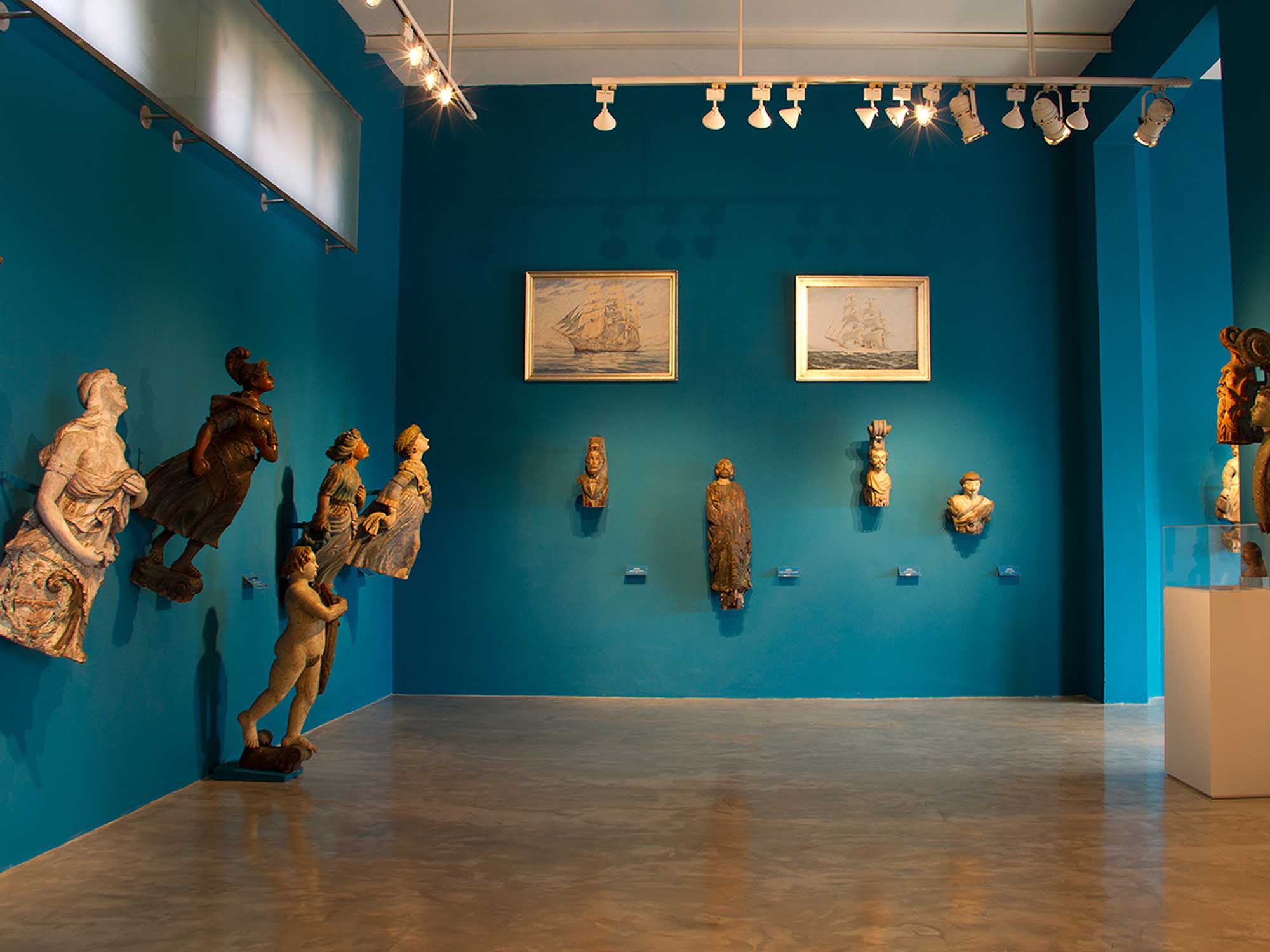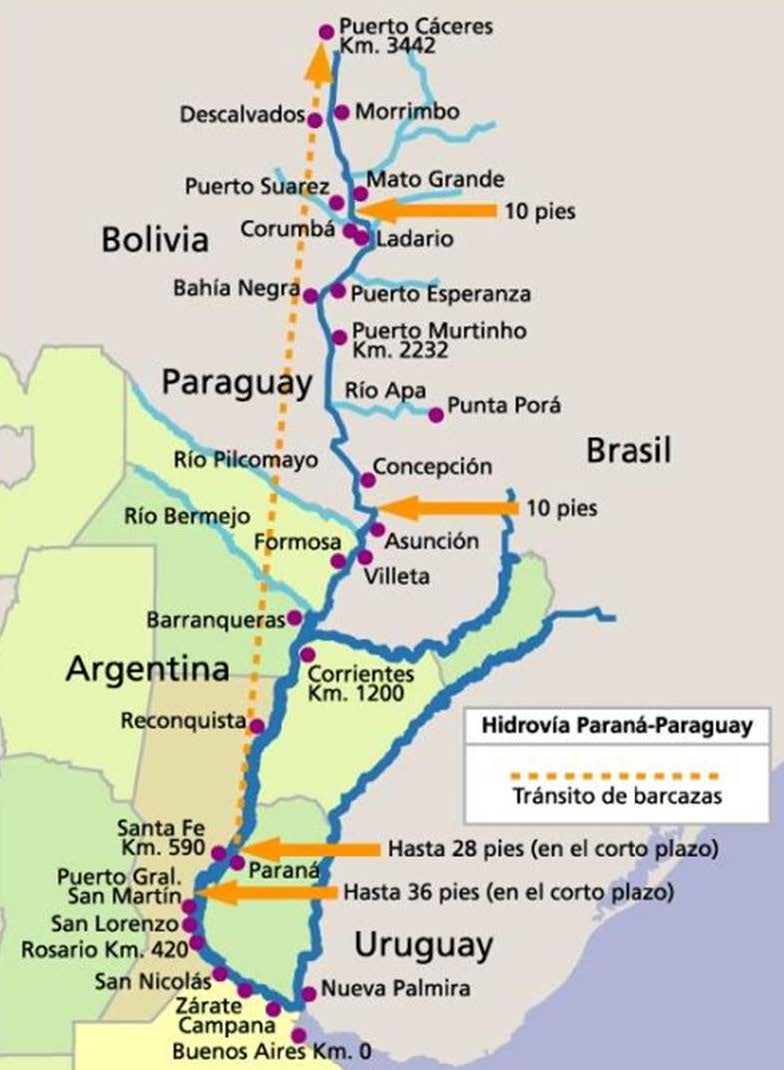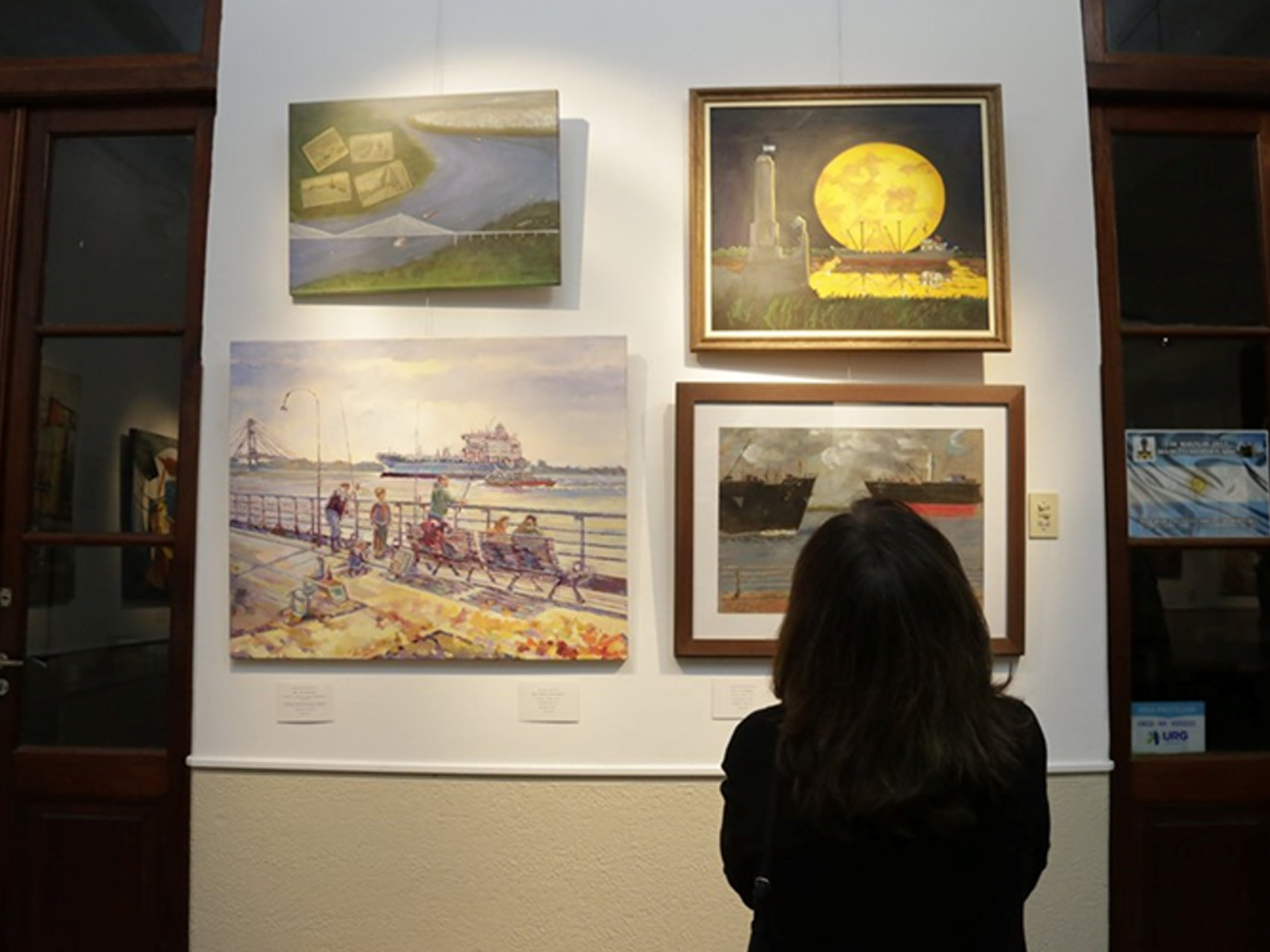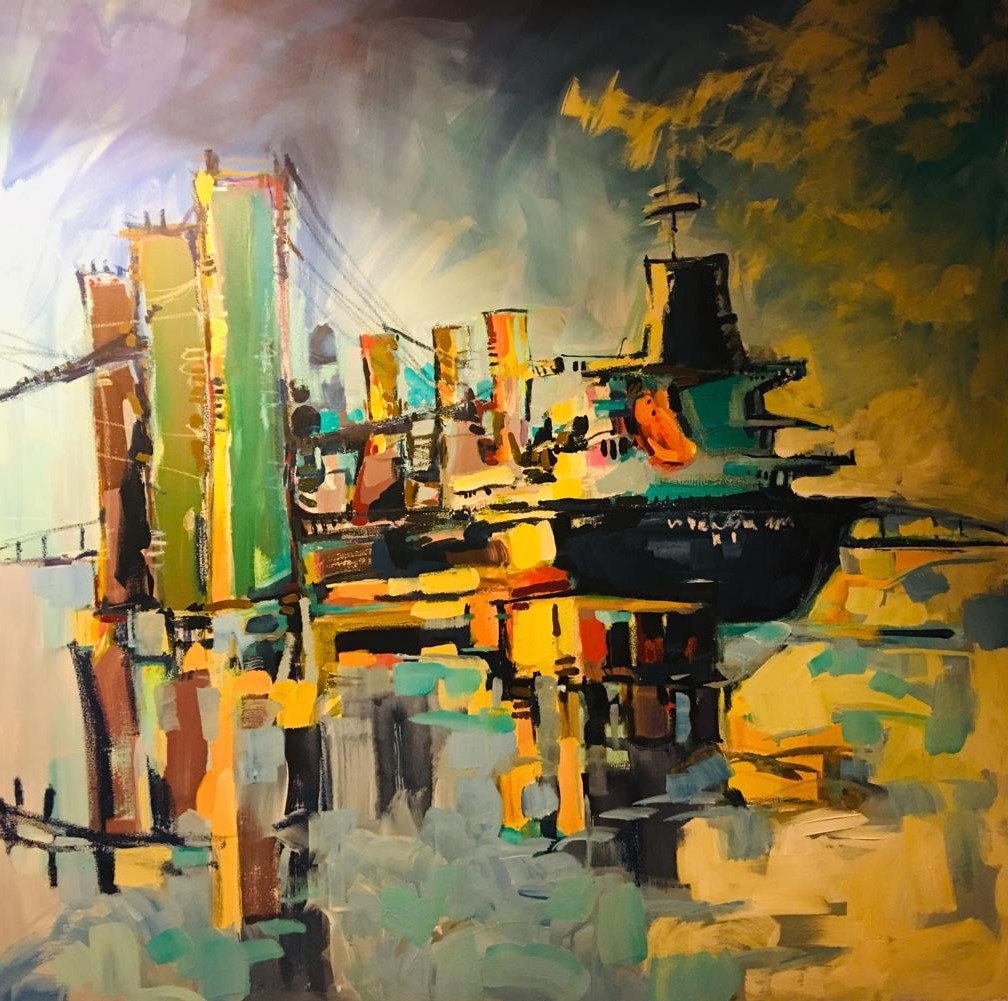Three thirds of the Earth surface is covered by sea water, i.e. oceans and seas. Superficial fresh water accounts for a marginal portion of the estimate. Thus, the care of our rivers should be valued, in particular, the care of those rivers that are now used for international freight and passenger transportation, as is the case of the Rio de la Plata, among others, in South America, The river mouth of the Plata and its affluents or converging rivers, the Paraná and Uruguay, meet the ocean in El Plata Basin. Along these rivers, there are a significant number of ports and port terminals, where ships come and go from and to the Atlantic Ocean. A series of embankments and imposing electric dams have been built in this part of the world. To be navigable, the rivers of the world need to be dragged (disturbing the river bed) and artificial locks have been built to enable the passage of vessels. At global level, only a third of the rivers have not been affected by human activity and flow freely.
The Ports of South America and their history
Ports tend to be friendly to cities and to become, all of them, sustainable. The preservation of the port heritage is not always possible in younger countries, such as South American ones. This is why preservation is replaced by Museums of the History of Navigation, such as the Naval Museums of Montevideo, Uruguay, the house-museum Isla Negra, of the poet Pablo Neruda, near Valparaíso, Chile or the Benito Quinquela Martin Museum in la Boca, Buenos Aires. All these museums display pictures of the European immigration in Argentina, its trade or historical events or parts of vessels.
In addition, the ports or port entities organize in their own sites art exhibitions which stage virtual reconstructions and illustrate the navigational history of the area, for instance, the Museum of the Central Government Seat in Argentina, located behind “Casa Rosada”, which was built on the grounds occupied by the Fort of Buenos Aires in the early 18th century, and the Taylor Customs, which boasts bricks original of 1855. In the city of Rosario, Province of Santa Fe, the Rosario Port Administration Agency addresses these issues.
Museo Quinquela Martin. 19th Century Figureheads, La Boca. Buenos Aires.
International Rivers and their Administration Committees
According to the Convention on the Law of the Sea of 1982 and subsequent treaties, International and Internationalized Rivers are those rivers where navigation is free and the general interest prevails over individual interests. Several “committees for the administration of shared rivers” have been generated along to supervise coexistence, based on a formula that consists in the establishment of international committees for the management of rivers, who, in turn, assist to the dialogue among countries in order to ensure governance. Their work is active and vital in the case of European rivers, which concentrate a significant amount of navigation. In South America, the most important ones are the Intergovernmental Coordinating Committee on La Plata Basin (CIC) and other committees such as the Administrative Committee on the Uruguay River (CARU), whose members are Argentina and Uruguay; the Administration Committee on the La Plata River (CARP); and the Intergovernmental Committee Parana- Parana Waterway (CIH), which comprises Argentina, Bolivia, Brazil, Paraguay and Uruguay.
Del Plata Basin. The second in Latin America and fifth in the World
Del Plata Basin is the region in South American drained by the La Plata River itself and its affluents, which flow into the Atlantic Ocean. Del Plata Hydrographic Basin covers an area of about 3,170,000 km², the second largest in South America and the Fifth in the world. The Basin spans the territories of five countries: Brazil, Bolivia, Paraguay, Argentina and Uruguay and is the main affluent system of the Guaraní aquifer, one of the main continental reserves of fresh water in the world. Ports and port terminals are located along all the geographical circuit.
The pertinent legislation is the “La Plata Basin Treaty” of the year 1969. Its main governing body is the meeting of foreign ministers, whose decisions must be unanimous.
The Intergovernmental Committee, CIC, is the Coordinator of the Basin’s Countries, based in Buenos Aires, which has had more presence since 2018. The Committee is devoted its efforts to the creation of an international observatory, which has also enabled the inclusion of issues related to the ports’ heritage, in addition to environmental ones.
Paraná Paraguay Waterway. Rosario, its nucleus-city
The Parana Paraguay Waterway lies within the La Plata Basin system. From North to South, the Basin covers the area extending from the Brazilian city of Puerto Cáceres, in the state of Mato Grosso, Brazil, to the mouth of the Paraná River, opposite the port of Nueva Palmira, in the department of Colonia, Uruguay. The countries that share this river system are: Argentina, Bolivia, Brazil, Paraguay and Uruguay. These countries created the Intergovernmental Committee on the Waterway (CIH), through which they have entered into several agreements with international bodies.
The Waterway is geographically natural, is the longest in the world no locks have been build along it .However, it does need to be dragged in certain areas, up to 34 feet or 10 meters, in order to be able to receive large ships.
The identification duties have made it necessary to build 110 port facilities along the waterway, out of which 21 are state-run ports and 89 private port terminals. Eighty three percent of these facilities are located in Argentina and Paraguay.
In Argentina, more precisely, in the city of Rosario and the enhanced area of the Great Rosario, there are 26 port terminals, with soy bean, maize and other cereals poles. The Great Rosario is currently among the three-largest exporters of soy bean in the world, along with the U.S.A. and Brazil.
This is a strategic area because of its central location in the Paraná-Paraguay Basin and its proximity to the exit to the Atlantic Ocean through La Plata Basin. The port of Rosario is not really one port, but a series of port terminals. Thus, “Rosario Port” is the name given to a number of facilities, located on the Parana River, under the jurisdiction of the Rosario Port Administration Agency. The different port complexes lie along approximately 90 km on the right margin of the Parana river, from the town of Timbues, in the north, along approximately 45 km upstream of the city of Rosario, to the city of Constitución in the south, approximately 45 km downstream of the city of Rosario. In turn, the Port of Rosario Terminal, TPR, the only terminal located in the city of Rosario itself, its exploited by two companies, an Argentinean one and a Chilean one, and exports all kinds of goods. This is the Multi-purpose Terminal of the Province of Santa Fe.
The map below shows the Paraná Paraguay Waterway.
Rosario-Victoria Bridge over the Paraná Paraguay Waterway.
The Argentine Ports and the port terminals governed by the Provinces
In Argentina, the decentralization of the administration of the ports started with laws issued in 1992. First, the Argentine State regulated the “Administrative Reorganization and Privatization”, creating the “Ports and Navigable Waterways”, designated as the National Port Authority. This is the reason why rivers are administrated by the National Government.
Later on, in the same year, the national port model was defined, and the decentralization of the activity was advanced through the transfer of all ports to the provinces where they were located, with the exception of the port of the City of Buenos Aires. In turn, the provinces invited the private sector to participate through a national and international bidding process, which generated the so-called port terminals, which assumed all risks and responsibilities in exchange of a monetary compensations. The legislation on the preservation of the port heritage does not cover them yet.
Port of Rosario Administration Agency, ENAPRO
As we have seen, the Province of Santa Fe delegated the administrations of the ports of the City of Rosario to a National Government Agency, the Rosario Port Administration Agency/ EN.A.P.RO, whose function is the administration, supervision and exploitation of the Port, and to maintain both its commercial purpose as its specific port activity and the public use of the port. In addition, the city has public beaches and a river port terminal used by tourist vessels touristic purposes and for vessels crossing the river towards the beaches of the province Entre Ríos.
This Provincial agency is headed by a president and a board of director comprised of representatives of all the sectors involved in the operations of the port and of the economic and productive sectors of the region.
At present, first virtual river-port cultural corridor is being developed through the port heritage and its digitalization, carried out in the collaboration with the Nucleus of Regional Port Cities, the Institute for Historical, Economic, Social and International Studies, IDEHESI-CONICET, based in Rosario and formed by Rosario and a number of other cities.
In addition, in Rosario we feature the Athenaeum for the Studies on Waterways and Sustainable Ports “AEHPS”, which has signed an agreement with the ENAPRO through the University of the Latin American Educational Center, UCEL. The Athenaeum collects data of the Paraná Paraguay Waterway and its ports, and studies the progress in port sustainability, the proper certifications and legislation.
Exhibition Room ENAPRO 2019. Rosario.
2018 ENAPRO. Second Prize “Giant of the Parana” Author: Oscar Costa, Architect
Conclusion
The measures adopted by the different port supervisory bodies of Argentina on the issue of the preservation of the historical heritage have not been homogeneous. Legislation should be forceful. The lack of homogeneity may be related to the fact that some of the ports and port terminal are relatively new: some of them are no more than 10 years old. The problem exists in several countries of Latin America, but progress is being made with the help of universities and entities that study the port sector, among them also, the IDR Regional Development Institute.
References
Acuerdo de Santa Cruz de la Sierra sobre Transporte Fluvial por la Hidrovia Paraná Paraguay.
[Santa Cruz de la Sierra Agreement on River Transportation in the Parana- Paraguay Waterway] Available at: http://www.aladi.org/sitioaladi/documentos/facilitacionComercio/Libro_AcuerdoSantaCruzSierra_Hidrovia_V1.pdf
U.N. Convention on the law of the Sea.
Available at: https://www.un.org/depts/los/convention_agreements/texts/unclos/unclos_e.pdf
Reglas de Helsinski Sobre las Aguas de los Rios Internacionales.1966.
[Helsinki Rules on the Uses of the Waters of International Rivers]
Available at: https://archivos.juridicas.unam.mx/www/bjv/libros/1/356/58.pdf
Tratado De la Cuenca Del Plata, Brasilia, 1969.
[Del Plata Basin Treaty, Brasilia, 1696]
Available at: https://www.dipublico.org/3427/tratado-de-la-cuenca-del-plata/
Pascar, Norma et al. Paraná Paraguay Waterway. “Port legislation, economy and sustainability” Comparative Study. Invenio Journal No. 39.
Available at: www.ucel.edu.ar/
Head Image: “Port facilities of Puerto Rosario on the river”
Rosario en la Cuenca del Plata y el núcleo de la Hidrovía Paraná Paraguay
Tres cuartas partes de la superficie de la Tierra están cubiertas por agua que corresponden a océanos y mares, es decir aguas saladas, resultando marginal la representación de aguas dulces superficiales en dicha estimación. Por eso debe ser valorable el cuidado de nuestros ríos especialmente los que están ahora destinados a navegaciones de carga internacional y pasajeros; como lo es en Sudamérica, entre otros, el rio de la Plata, por cuya desembocadura se va al océano Atlántico, a través de sus afluentes, los ríos Paraná y Paraguay, o ríos convergentes como el Uruguay, los cuales todos desembocan en la Cuenca del Plata. Sobre los mismos se despliegan muchos puertos y terminales portuarias, donde los barcos entran y salen desde el océano Atlántico. También en esta parte del mundo se han construido embalses y represas eléctricas imponentes. Los ríos del mundo, para su navegación, han necesitado ser dragados, moviendo sus suelos, y se han hecho muchas exclusas artificiales para el paso de embarcaciones. A nivel mundial, solo un tercio de los ríos, son los que quedan sin acción del ser humano y pueden fluir libremente.
Los Puertos en América del Sur y la historia
Los puertos tienden a ser amigables con las ciudades y volverse todos, sustentables. La preservación del patrimonio portuario no es del todo posible en países más jóvenes, como en América del Sur. Es por ello que dicha preservación, que se ve reemplazado, con museos históricos de la navegación, como el museo naval de Montevideo, Uruguay, la casa museo Isla Negra, del Poeta Pablo Neruda, próxima a Valparaíso, Chile o el museo Benito Quinquela Martin, en la Boca, Buenos Aires, en ellos se refleja pinturas sobre la inmigración europea en Argentina, su comercio, episodios históricos o partes de barcos que ya no están.
También los puertos o entes portuarios hacen exposiciones de arte en sus mismas sedes, historias de la navegación y reconstrucciones virtuales, como es el ejemplo del museo de la Sede de Gobierno Central en Argentina, detrás de la casa Rosada, el cual ocupa el espacio exacto en el que estuvo el Fuerte de Buenos Aires a principios del siglo XVIII y la Aduana Taylor, con los ladrillos originales de 1855. En la ciudad de Rosario, Provincia de Santa Fe, el Ente Administrador de Puerto Rosario, se está interesando en la temática.
Museo Quinquela Martin. Mascarones de Proa siglo XIX, La Boca. Buenos Aires.
Los Ríos internacionales y sus comisiones de administración
Los ríos internacionalizados y los internacionales, según la Convención del mar de 1982, de Naciones Unidas y tratados posteriores, son aquellos en los cuales existe libertad de navegación prevaleciendo el interés general sobre el particular. Se han ido generando “comisiones de administración de ríos compartidos” para controlar la convivencia, a lo largo del tiempo, con una fórmula que consiste en el establecimiento de estas comisiones internacionales de administración fluvial, quienes a su vez colaboran en el dialogo entre países para su gobernanza. Los ríos europeos donde la concentración de la navegación es muy grande son sumamente activas y necesarias. En Sudamérica podemos nombrar el más importante por su dimensión, el Comité Intergubernamental Coordinador de los Países de la Cuenca del Plata / CIC. Y otras como la Comisión Administradora del Rio Uruguay / CARU entre Argentina y Uruguay, la Comisión Administradora del Rio de la Plata CARP y el Comité intergubernamental de la Hidrovía Paraná Paraguay / CIH, que abarca Argentina, Bolivia, Brasil, Paraguay y Uruguay.
La Cuenca del Plata. La 2da de Latinoamérica y la quinta del Mundo
La Cuenca del Plata es la parte de América del Sur drenada por el propio río de la Plata y sus afluentes y desemboca en el océano atlántico. La cuenca hidrográfica del Plata cubre un área de unos 3.170.000 km², lo que la convierte en la segunda mayor de Sudamérica y la quinta del mundo, abarca territorios de cinco paísesː Brasil, Bolivia, Paraguay, Argentina y Uruguay y es el principal sistema de recarga del acuífero Guaraní, uno de las mayores reservas continentales de agua dulce del mundo. Puertos y terminales portuarias recorren su circuito geográfico.
La legislación es el “tratado de la Cuenca del Plata” del año 1969, el cual cuenta como órgano máximo a la reunión de cancilleres, sus decisiones deben ser unánimes.
Como Coordinador de los Países, se encuentra el Comité intergubernamental de la Cuenca del Plata CIC, con sede en Buenos Aires, el cual está teniendo más presencia desde el 2018, se encuentra abocado a la creación de un observatorio internacional, lo cual posibilita también incluir temáticas de preservación de patrimonio portuario, además del medioambiental.
Hidrovia Paraná Paraguay. Rosario ciudad Núcleo de la misma
Dentro del sistema de la Cuenca de Plata, se encuentra la Hidrovía Paraná Paraguay. la misma se extiende de norte a sur desde la ciudad brasileña de Puerto Cáceres, en el estado de Mato Grosso, Brasil, hasta desembocar en el delta del Paraná, frente al puerto de Nueva Palmira, ubicado en el departamento de Colonia, en Uruguay. Los países que comparten este sistema fluvial son Argentina, Bolivia, Brasil, Paraguay y Uruguay, países que crearon el Comité Intergubernamental de la Hidrovía (CIH), a través del cual celebraron diversos convenios con organismos internacionales.
La Hidrovía es natural geográficamente, sin exclusa alguna y la de mayor kilometraje del mundo. Necesita si, ser dragada en algunas zonas hasta 34 pies o sea unos 10 metros, para poder recibir a los buques de gran porte.
La tarea de identificación precisó que en la Hidrovía hay 110 instalaciones portuarias, de las cuales 21 son puertos públicos y 89 terminales privadas. El 83% de estas instalaciones están situadas en Argentina y Paraguay.
En Argentina, y puntualmente en la ciudad de Rosario y la zona ampliada del Gran Rosario posee 26 terminales portuarias, con polos de soja, maíz y otros graneles. El gran Rosario, está entre los tres exportadores mundiales de soja del mundo junto a EEUU y Brasil.
Una zona estratégica por su ubicación central en la Hidrovía Paraná-Paraguay y por su proximidad a la salida a la Cuenca del Plata hacia el Océano Atlántico. Por lo cual no existe un puerto Rosario propiamente dicho, sino una sucesión de terminales. Entonces, se denomina “Puerto Rosario” al conjunto de instalaciones, situadas sobre el río Paraná, con Jurisdicción del Ente Administrador Puerto Rosario. Los distintos complejos portuarios se desarrollan por aproximadamente 90 km sobre la margen derecha del río Paraná desde la localidad de Timbúes, al norte, aproximadamente 45 km aguas arriba de la ciudad de Rosario, hasta la ciudad de Villa Constitución al sur, aproximadamente 45 km aguas abajo de la ciudad de Rosario. A su vez, la Terminal Puerto Rosario, TPR, es la única ubicada en la misma ciudad de Rosario y pertenece en su explotación a dos empresas, una argentina y una chilena e importa y exporta todo tipo de mercaderías, siendo la Terminal Multipropósito de la Provincia de Santa Fe.
Mapa que contiene la Hidrovía Paraná Paraguay.
Puente Rosario Victoria sobre la Hidrovía Paraná Paraguay.
Los puertos argentinos y las terminales portuarias a cargo de las Provincias
La descentralización de la administración portuaria, en Argentina, tuvo su comienzo en leyes de 1992. El Estado Argentino reguló primero la “Reorganización administrativa y su privatización”, creando así la” Subsecretaría de Puertos y Vías Navegables”, designándose como la Autoridad Portuaria Nacional, siendo por ese motivo que a los ríos los administra el Gobierno de la Nación.
Con posterioridad, se definió en el mismo año, el modelo portuario nacional y se promovió la descentralización de la actividad, a través de la transferencia de todos los puertos a sus provincias, con excepción del puerto de la Ciudad de Buenos Aires. Las provincias, a su vez le dieron intervención al sector privado mediante procesos de licitaciones, nacionales e internacionales generando las denominadas terminales portuarias, son ellas las que asumieron las responsabilidades y riesgos, a cambio de contraprestaciones económicas. La legislación sobre preservación de patrimonio portuario aun no les alcanza.
Ente Administrador de Puerto Rosario, ENAPRO
La Provincia de Santa Fe, como ya observamos, delegó la administración portuaria de la Ciudad de Rosario a un Ente público no estatal, el Ente Administrador Puerto Rosario / EN.A.P.RO, cuya función es la de administrar, controlar y explotar el Puerto, manteniendo su destino comercial como la actividad portuaria específica y el uso público del mismo. La ciudad tiene además, playas de uso público y una estación fluvial de paseo y cruce en embarcaciones, hacia Playas de la provincia de Entre Ríos.
Este ente Provincial, posee una presidencia, con representación en su consejo directivo de todos los sectores involucrados en la operatoria portuaria y de aquellos que representan el interés económico y productivo de la región.
Se avanza con el primer corredor cultural portuario ribereño virtual, a través del patrimonio portuario y su digitalización en colaboración con el Núcleo de Ciudades Portuarias Regionales, del Instituto de Estudios Históricos, Económicos, Sociales e Internacionales (IDEHESI-CONICET) con sede en Rosario e integrado por otras ciudades.
Presentamos en Rosario también, el Ateneo de Estudios de Hidrovías y Puertos Sustentables “AEHPS”, que tiene convenio con ENAPRO, desde la Universidad del Centro Educativo latinoamericano UCEL, el cual toma datos de la Hidrovia Paraná Paraguay y sus puertos, y estudia sus avances en sustentabilidad portuaria, certificaciones adecuadas y legislación.
Salón Exposición ENAPRO 2019. Rosario.
2do. Premio 2018 ENAPRO.” Gigante del Paraná”. Autor: Arquitecto Oscar Costa.
Conclusiones
Las medidas adoptadas por los diversos entes de control portuario de la Argentina, en materia de preservación histórica patrimonial no han sido uniformes. La legislación debe ser más contundente. Y también, quizás, se relacione con el hecho de que hay puertos y terminales portuarias, relativamente nuevas, algunas con no más de 10 años de antigüedad. La problemática se reitera en Latinoamérica pero se está avanzando con la colaboración de universidades, y entidades de estudios diversas del sector portuario entre ellos tambien el Instituto de Desarrollo Regional IDR.
Referencias
Acuerdo de Santa Cruz de la Sierra sobre Transporte Fluvial por la Hidrovia Paraná Paraguay. http://www.aladi.org/sitioaladi/documentos/facilitacionComercio/Libro_AcuerdoSantaCruzSierra_Hidrovia_V1.pdf
Convención de las Naciones Unidas sobre El Derecho del Mar. 1982.
http://www.un.org/depts/los/convention_agreements/texts/unclos/convemar_es.pdf
Reglas de Helsinki Sobre las Aguas de los Rios Internacionales. 1966
Tratado De la Cuenca Del Plata, Brasilia, 1969.
Pascar, Norma y otras. Hidrovia Paraná Paraguay. “Legislación, economía y sustentabilidad Portuaria”. Comparativa. Revista Invenio Nro 39. 2018.
Head Image: Instalaciones portuarias de Puerto Rosario sobre el río.




